Making your own homemade gluten free baking powder is quick and easy! You can store it for weeks and have it on hand whenever you are in the mood for baking some goodies. Also, with homemade baking powder you know what's inside, definitely a plus!

Jump to:
The more I share gluten free and allergy friendly recipes in general, the more I receive comments about more and more people having issues with yeast.
Which is why you will find quiet a few gluten free recipes (that would usually use yeast), made using baking powder, to hopefully make more and more foods accessible and easy to make.
What is baking powder
Baking powder is a leavening agent that consists of a base - usually baking soda - and an acidic agent.
Baking soda needs an acidic agent (and a liquid) to react to, in order to release carbon dioxide, which is what makes a dough or batter rise while baking (or cooking, like for pancakes).
Baking powder also usually contains a starch as an anti-caking agent, so that clumps won't form while stored.
Is baking powder gluten-free?
Store-bought baking powder can be gluten free, but not necessarily. Baking powder usually contains some kind of starch as anti-caking agent and that could include wheat starch. Or, it could be manufactured in a factory that processes gluten. For these reasons, if you are allergic or highly sensitive to gluten, you need to make sure baking powder is labeled gluten free.
Why make homemade baking powder
Learning how to make homemade baking powder is a great way to:
- always have baking powder on hand (and have it fresh)
- avoid unnecessary additives and preservatives
- know what ingredients it contains and adjust it to your dietary needs, i.e. gluten free, aluminum free, vegan, etc.
Baking powder vs baking soda
People often wonder is baking powder and baking soda the same and the answer is nope.
Baking soda as a leavening agent that needs both a liquid and an acidic agent to react and allow a dough or batter to rise.
Recipes that only call for baking soda (and no baking powder) already have an acid element in the ingredients (buttermilk, yogurt, lemon juice, etc.)
Baking soda is one of the ingredients of baking powder, which is a complete leavening agent.
Tools for diy baking powder
To prepare your own homemade gluten free baking powder you will need:
- measuring cups or a kitchen scale
- (measuring) spoon
- whisk
- airtight container or mason jar
Ingredients and Instructions
Here are the ingredients to make baking powder at home:
- 1 CUP cream of tartar powder
- ½ CUP baking soda
- 1 tablespoon gluten free starch, optional (i.e. corn, rice, potato starch), I sometimes don't add it and the baking powder still works perfectly

This is mostly an indication of ingredients ratio.
What is important is that the quantity of cream of tartar always needs to be twice as much as the quantity of baking soda.
So you can also measure 100 grams cream of tartar and 50 grams of baking soda (and add a tablespoon of starch if desired).
You could also use a mug or a drinking glass: full mug of cream of tartar, half mug of baking soda.
What's important is that you use the same "container" to measure the two ingredients.
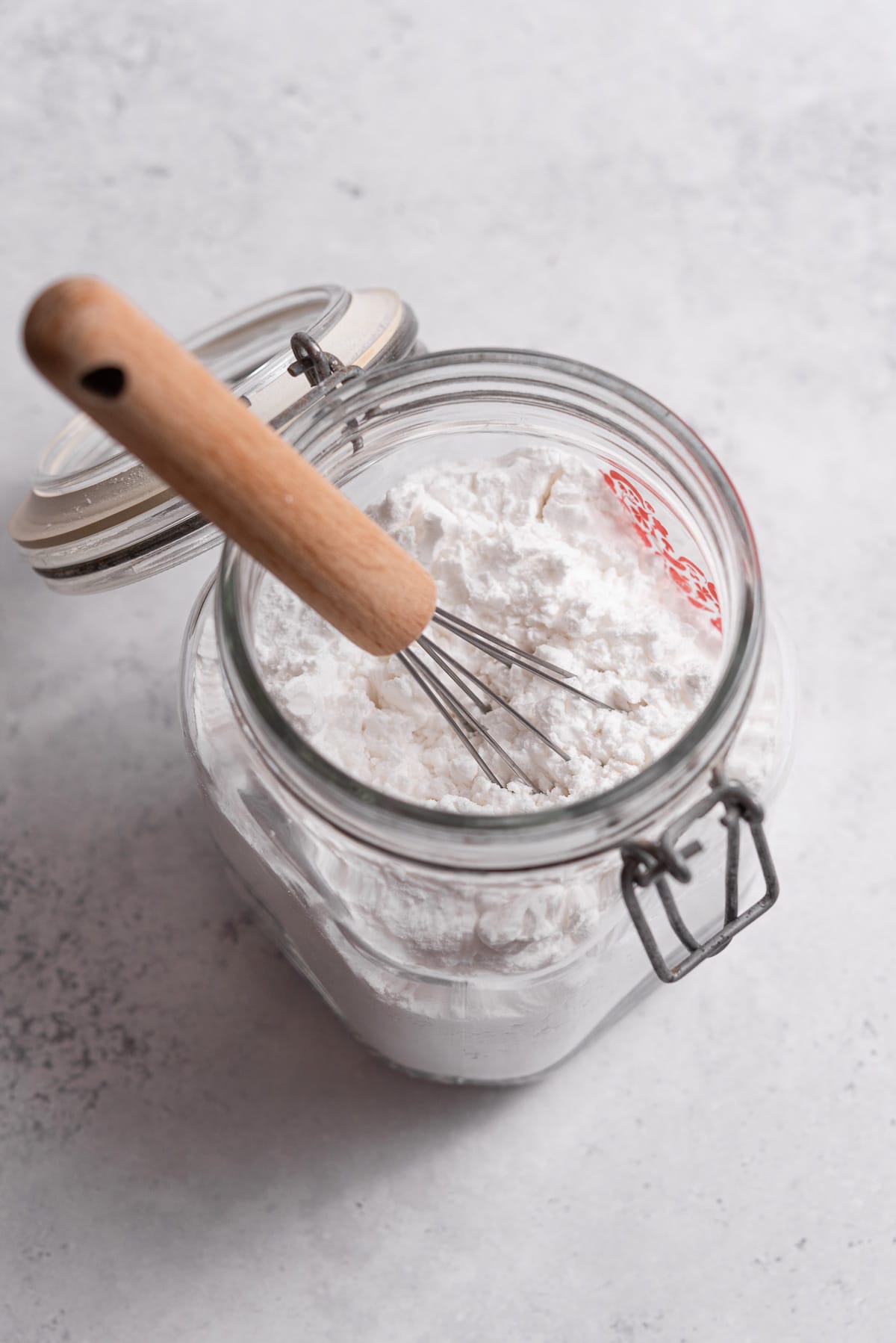
Add them directly to an airtight container or mason jar, mix well with a spoon or a whisk and close.
Store in a dry, fresh cabinet for up to a couple months (make sure the single ingredients expiration dates are longer, of course).
Baking powder alternatives
What if you have neither storebought baking powder, nor homemade one and want to bake a cake?
Well, if you have baking soda I am pretty sure you can still make an impromptu baking powder alternative with what you have in your pantry 😉
So if you are wondering what can you substitute for baking powder, here are two options.
I have used the following "emergency" alternatives both for cakes/cupcakes (with a 300 grams flour base) and bread, pizza, rolls (with a 500 grams flour base):
- 1 teaspoon baking soda
- 1 tablespoon lemon juice
- Once you have mixed all the cake/bread ingredients and have obtained a smooth batter, add the baking soda and then the lemon juice on top.
- It will react making bubbles, incorporate the mix into the batter right away, pour into baking pan/moulds and bake right away

Second baking powder alternative is:
- 1 teaspoon baking soda
- 1 tablespoon (apple cider) vinegar
- Once you have mixed all the cake/bread ingredients and have obtained a smooth batter, add the baking soda and then the vinegar on top.
- It will react making bubbles, incorporate the mix into the batter right away, pour into baking pan/moulds and bake right away.

These two recipes are a nice last minute sub for baking powder, though the end result is not exactly the same as with homemade baking powder.
To show what I mean, I made simple gluten free vegan cupcakes and used the three options for leavening agents.
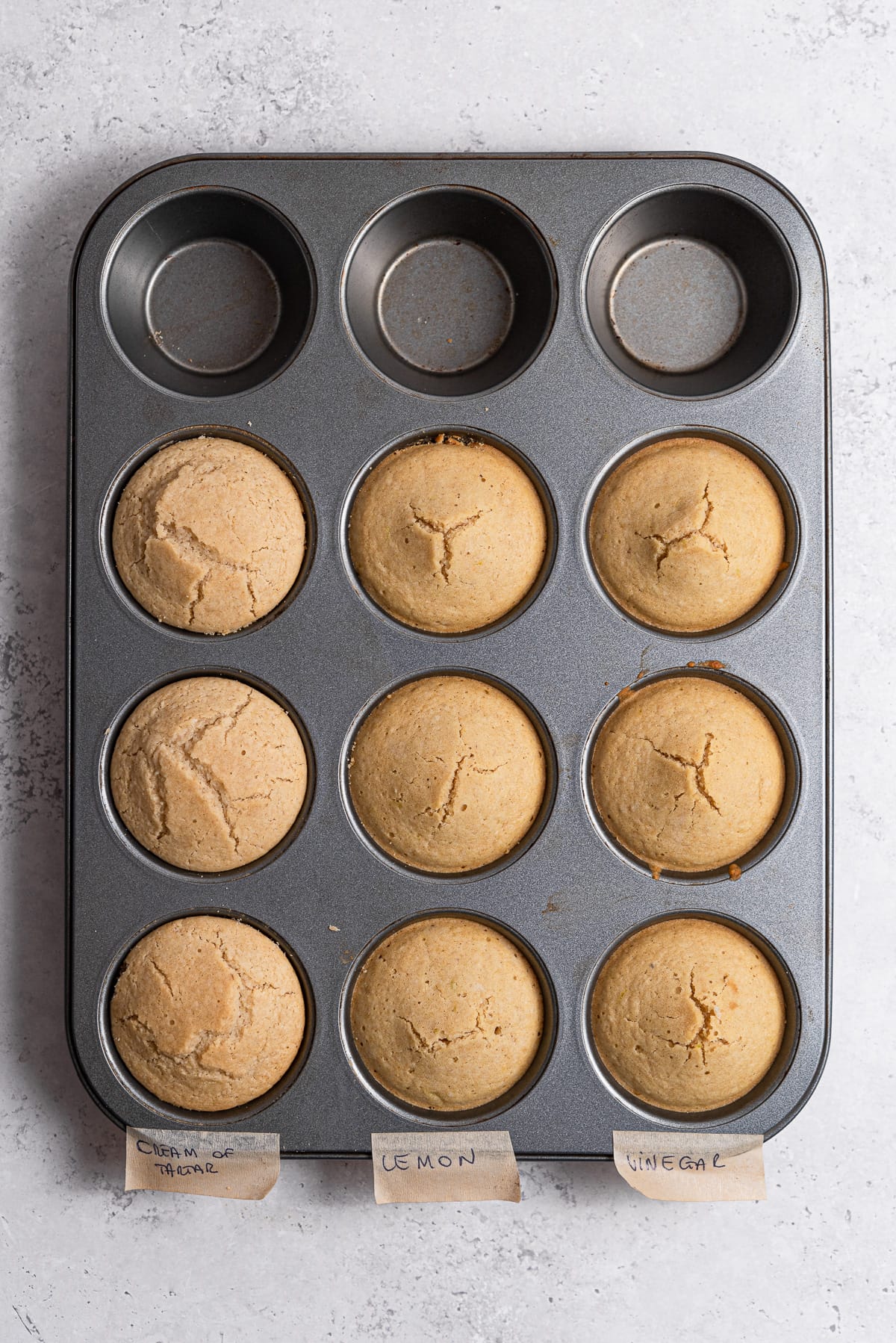
As you can see the results are a bit different:
- homemade baking powder makes fluffier and lighter cupcakes
- baking soda + lemon juice makes them soft, but dense, possibly with a light taste of baking soda
- baking soda + vinegar makes them denser than when using lemon, still soft, possibly a light taste of baking soda
I still think that lemon and vinegar are a good alternative, if you are really craving home baked goodies.

Gluten free yeast free recipes
... using homemade gluten free baking powder instead of yeast:
If you make this recipe or have questions, leave me a comment down here! And a 5 star rating if you have loved it would help me grow the blog 😉
For all the updates, follow me on Pinterest and Instagram and tag me if you make this or any of my recipes! I absolutely LOVE to see what you make and share it in my stories!
Ciao!
Sonia
📖 Full Recipe
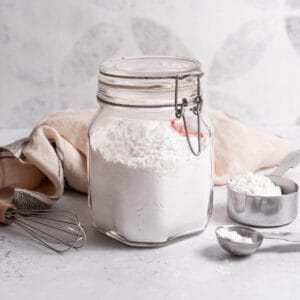
How to make Homemade Gluten free Baking Powder
Equipment
- measuring cups or kitchen scale
- spoon
- whisk
- airtight container or mason jar
Ingredients
Baking Powder (see notes)
- 1 CUP cream of tartar
- ½ CUP baking soda
- 1 tablespoon gluten free starch (potato, corn, rice) optional
Instructions
- Add the ingredients directly to an airtight container or mason jar, mix well with a spoon or a whisk and close.
- Store in a dry, fresh cabinet for up to a couple months (make sure that single ingredients expiration dates are longer, of course).


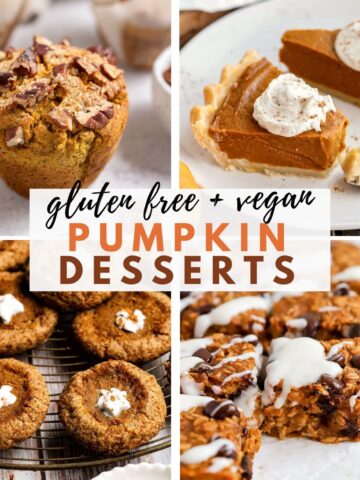
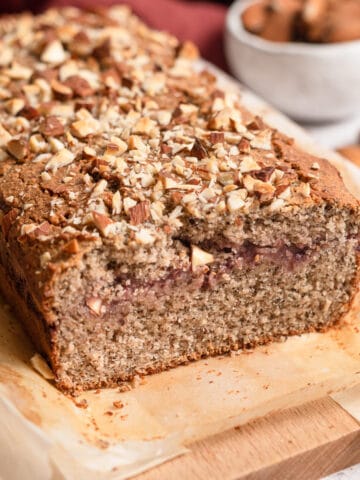
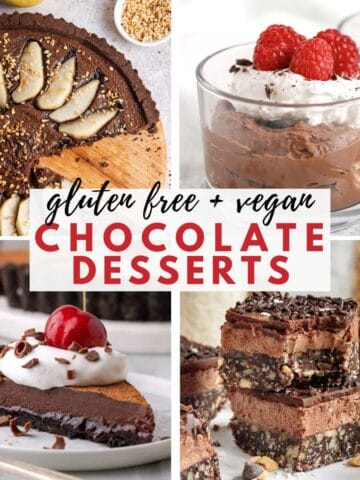

Leave a Reply